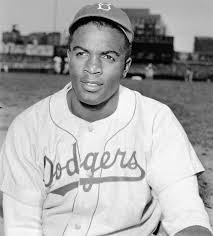A decade ago, a driver nearly hit me when she made a careless turn. (I think she was distracted.) I yelled a few things they don't teach immigrants in English classes and flashed a one-fingered peace sign. She rolled down her window and lectured me on how I "should be riding on the bike lane." Never mind that the lane was on another street and wouldn't have taken me where I was going.
To this day, too many drivers and seem beholden to the same notion. I was once stopped by a cop when I turned out of a bike lane onto a side street. Said cop claimed that I went through a light--which I wasn't--and that I "should stay in the lane." Never mind that I turned off the lane to go where I needed to go and that, in any event, even if I had gone through the light when there was no cross-traffic--or ahead of a driver who would turn right when the light turned green--I (and the driver) would be safer than if I'd strictly followed the signal. When I pointed that out, the cop said, "I ride a bicycle, too," in a tone of reminded me of people who tell me about a gay brother, sister or friend before doing or saying something to hurt me.
If bicyclists could ride only in bike lanes, we couldn't go anywhere--unless, of course, the lane goes right to the doors of our homes, schools, workplaces or favorite stores, cafes, museums or anyplace else we go.
Erin Riediger understands as much. The Manitoba-based architect and host of Plain Bicycle Podcast veered from the bike lane into the traffic lane so she could turn onto a side street. A man walked in front of her bike, struck her and said, "The bike lane is over there."
Fortunately, she wasn't hurt, at least not physically. She posted a series of Tweets about the incident and most of the responses were sympathetic. However, as almost invariably happens on Twitter, trolls clambered from under their rocks. One upbraided her for "wasting her time" with those posts (If she was "wasting her time," wha does that say about the troll?), she should have "called the cops"--which she did. Others posted stuff that nobody should be subjected to.
Still other twits (what I call trolls on Twitter) lectured her about how she should have handled the incident or stayed in the bike lane. Then there were the ones who used the occasion to rant about how cyclists should have licenses, insurance, etc.--which many, if not most, of us have--never mind that those things have nothing to do with the real issue at hand: someone--a woman--was assaulted--by a man--when she rode her bike.
A woman was assaulted by a man as she rode her bicycle. She was within the law; he wasn't. Those are the facts of this case; they have nothing to do with licenses, insurance or anything else that's bothering trolls with too much time on their hands.





